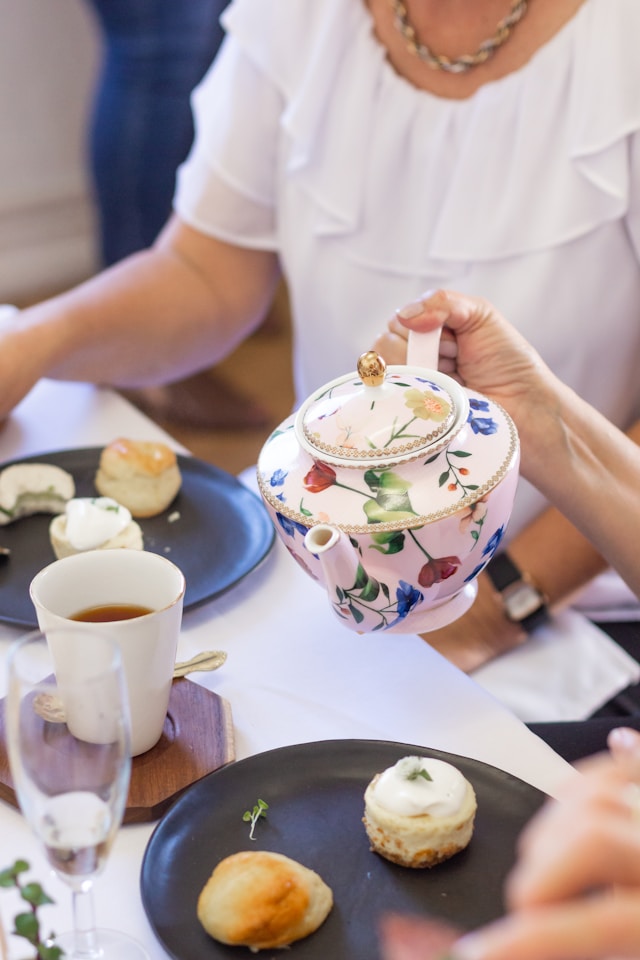How Care Homes Provide Healthy and Tasty Meals for Residents

For older adults, eating well isn’t just about enjoying tasty food, it’s also key to staying healthy, keeping energy levels up, and feeling their best. That’s why care homes put so much thought into creating meals that are both nutritious and delicious. Care home chefs work hard to make sure every resident gets meals they enjoy while also meeting any dietary needs or health conditions. Whether it’s a home-cooked favourite, a seasonal dish made with fresh ingredients, or a carefully prepared meal for someone with specific requirements, there’s always a focus on flavour, variety, and balance. Good care homes prioritise providing tasty, healthy meals that support wellbeing while making mealtimes a real highlight of the day.
Understanding Nutritional and Hydration Needs in Later Life
As we get older, our bodies change, and so do our nutritional needs. Eating well is still just as important, but factors like a smaller appetite, difficulty chewing, or certain health conditions can make it harder to get the right balance of nutrients. That’s why care homes take a thoughtful, personalised approach to food, ensuring every meal is not only enjoyable but also packed with what residents need to stay strong and healthy.
For example, older adults often need more protein to help maintain muscle strength, plenty of fibre to support digestion, and enough fluids to stay hydrated. Some residents also need softer textures, extra calories, or meals adapted for conditions like diabetes. Care homes work closely with dietitians, chefs, and healthcare teams to make sure every plate is not just nutritious but also suited to each resident’s specific needs. They also use the Malnutrition Universal Screening Tool (MUST) to identify residents at risk of malnutrition.
Of course, food isn’t just about nutrition—it’s about enjoyment too. A well-prepared, flavourful meal can make all the difference in keeping a good appetite and ensuring residents look forward to mealtimes. That’s why care homes focus just as much on taste and presentation as they do on health, creating meals that are as appealing as they are beneficial.
Personalised Meal Plans and Finger Foods for Every Resident
Everyone has their own tastes and preferences when it comes to food, and that doesn’t change just because someone moves into a care home. That’s why personalised meal planning is such an important part of providing great care. Meeting residents' nutrition and hydration needs is crucial, ensuring they receive adequate and suitable food and drink tailored to their dietary preferences and restrictions.
Before a new resident moves in, the care team will discuss their dietary preferences, medical needs, and any special requirements they may have. Some people may need a soft or fortified diet, while others may have allergies or cultural preferences that shape their meals. No matter the requirement, care homes work hard to ensure that every meal is both suitable and satisfying. Menus are designed to offer variety, with plenty of choices at every mealtime. If someone doesn’t fancy what’s on the menu, there’s always an alternative available. The goal is to make sure residents not only get the right nutrition but also genuinely enjoy their food.


Balancing Nutrition with Enjoyment
A good diet helps residents stay healthy and energetic, but just as importantly, food should be something to look forward to. That’s why menus are carefully planned to strike the perfect balance between nutrition and enjoyment. The Food Standards Agency plays a crucial role in ensuring that all care homes are regulated and rated for hygiene standards, providing confidence to residents and their families regarding the quality of meals served.
Using fresh, seasonal ingredients is one of the best ways to achieve this, good care homes source produce locally, ensuring that meals are made with high-quality ingredients. Seasonal cooking also brings a bit of natural variety to menus, meaning residents can enjoy delicious casseroles in the chilly months, followed by lighter dishes like fresh salads and fruity desserts in the summer. Care homes prepare food on-site each day, avoiding serving residents too much in the way of processed ingredients and focusing on home-cooked dishes.
Chefs also make sure that the food served also looks appetising. A well-prepared plate, full of colour and variety, encourages residents to eat well, even if their appetite isn’t what it used to be. Simple touches like garnishing soups with fresh herbs or serving puddings with a swirl of cream can make a big difference. Whether it’s a Sunday roast, a fish supper, or a homemade apple crumble, every meal is prepared with care to ensure that it’s as delicious as it is nourishing.
The Social Side of Mealtimes
In care homes, creating a welcoming and sociable dining experience is just as important as serving nutritious, tasty meals. For many residents, mealtimes are a highlight of the day, which is why care home dining rooms are designed to feel warm and inviting, with comfortable seating and a homely feel. Staff are always on hand to offer support where needed, whether that’s helping residents with their meals or simply sharing a friendly chat.
Themed meals and special occasions add even more variety to the care home menu. Whether it’s a traditional Sunday roast, a birthday celebration, or a themed evening featuring new dishes from around the world, these events bring a sense of fun and community. Residents are also encouraged to have a say in menus, helping to shape meals based on their preferences and favourite foods. For those who prefer a quieter dining experience, care homes also offer the flexibility for residents to enjoy meals in their own rooms if they prefer.


Encouraging Hydration and Snack Options
Staying well-hydrated is just as important as eating a balanced diet, but as we age, our sense of thirst can naturally decline. This means that older adults may not always drink enough fluids throughout the day, which can lead to dehydration and other health concerns. Care homes take a proactive approach to hydration, making sure that residents have plenty of opportunities to drink in a way that feels natural and enjoyable. A variety of cold drinks, including healthier alternatives like traditional squashes, fresh fruit juices, lemonade, and tonic water, are available to cater to different preferences. Some residents may need additional support with hydration, particularly those with memory loss, so care teams ensure drinks are regularly offered and made easily accessible.
Snacks also play an important role in keeping energy levels up and supporting those with smaller appetites. A variety of nourishing snacks are always on hand, from fresh fruit and homemade bakes to cheese and crackers or smoothies. For residents who need extra calories, snacks can be tailored to include high-energy options such as full-fat yoghurts, nut butters, or fortified drinks.
Meeting Dietary and Medical Needs with Care Using the Malnutrition Universal Screening Tool
Care homes take great care to ensure that meals are not only enjoyable but also suitable for individual health conditions. Whether someone requires a low-sugar diet for diabetes, reduced salt for high blood pressure, or extra protein to support strength and recovery, meals are carefully planned to provide the right nutrition without compromising on flavour.
For residents who have difficulty swallowing, known as dysphagia, meals may need to be adapted to a softer or puréed texture. Care homes follow expert guidance from speech and language therapists to make sure that texture-modified diets are safe while still being appetising. Rather than serving bland, unappealing food, chefs take extra steps to ensure these meals are well-seasoned, visually appealing, and full of flavour. Residents can refuse nutrition if it is not in their best interest, and care staff must balance meeting nutritional needs with respecting individual choices.
Food allergies and intolerances are also taken seriously, with careful preparation and monitoring to ensure that residents can eat safely. Staff are trained to understand individual dietary requirements and work closely with healthcare professionals to ensure that every meal supports the resident’s overall wellbeing.
Food That Feels Like Home at Springvale
By tailoring diets to meet medical needs while still focusing on taste and enjoyment, care homes help residents eat well, stay healthy, and continue to enjoy their favourite foods in a way that works for them. Providing suitable and nutritious food and hydration is crucial to sustain life and prevent malnutrition.
Thoughtfully prepared meals, fresh seasonal ingredients, and a warm, sociable dining experience all help to make mealtimes something to look forward to for care home residents. Whether it’s a hearty home-cooked favourite, a refreshing summer dish, or a carefully tailored meal to meet specific dietary needs, the focus is always on providing food that is both nourishing and enjoyable. Unplanned weight loss is a significant concern, especially for elderly residents, and care homes address this by ensuring meals are nutritious and meet the dietary needs of each individual.
At Springvale Care Home, we understand how important good nutrition is for our residents. Our talented chefs create delicious, well-balanced meals each day, catering to individual tastes and dietary requirements while making sure mealtimes remain a highlight of the day. If you’d like to find out more about our approach to dining or see our menus in action, we’d love to welcome you for a visit. Get in touch with our friendly team to arrange a tour and experience the warm, homely atmosphere of Springvale Care Home for yourself.






